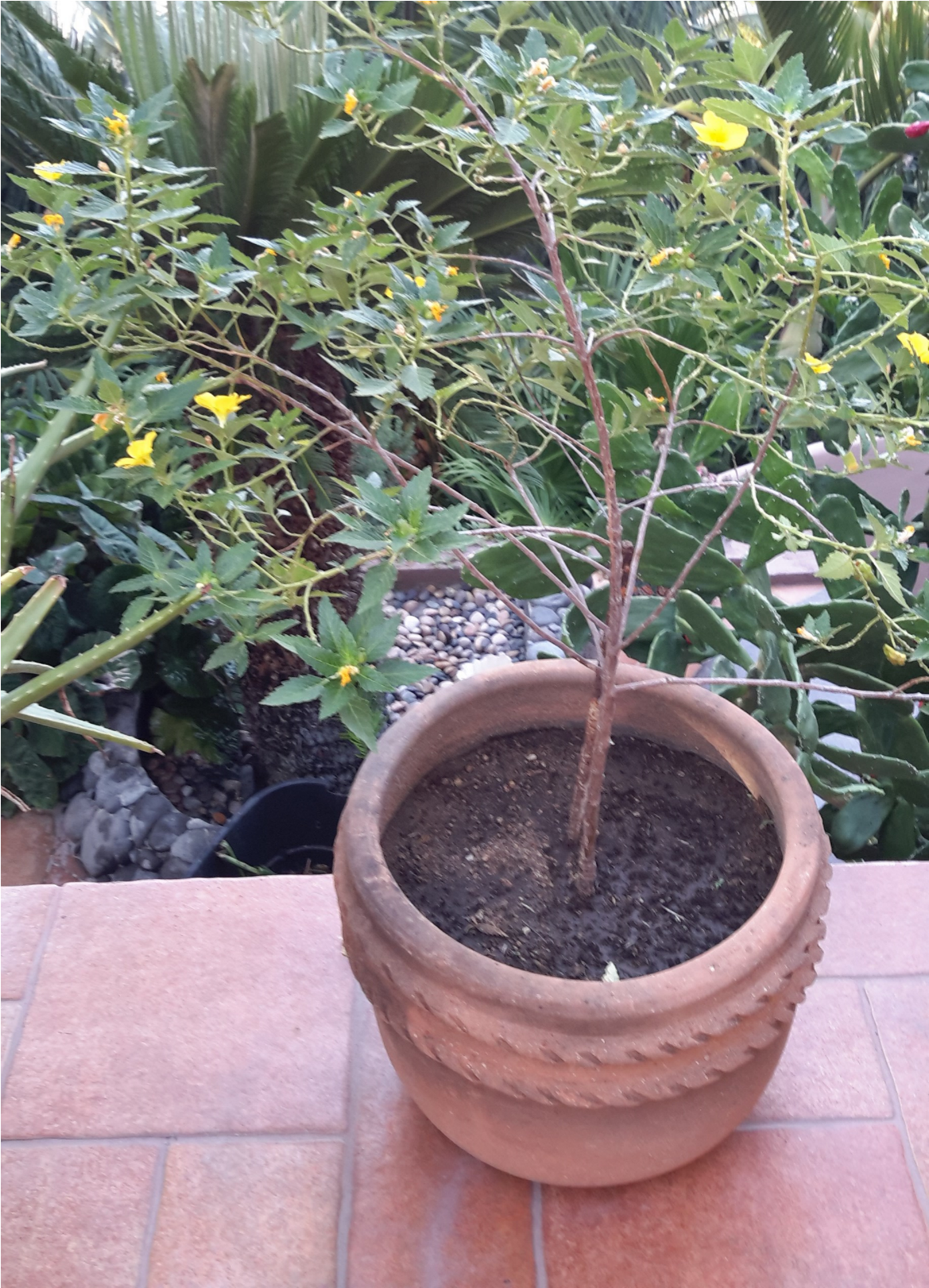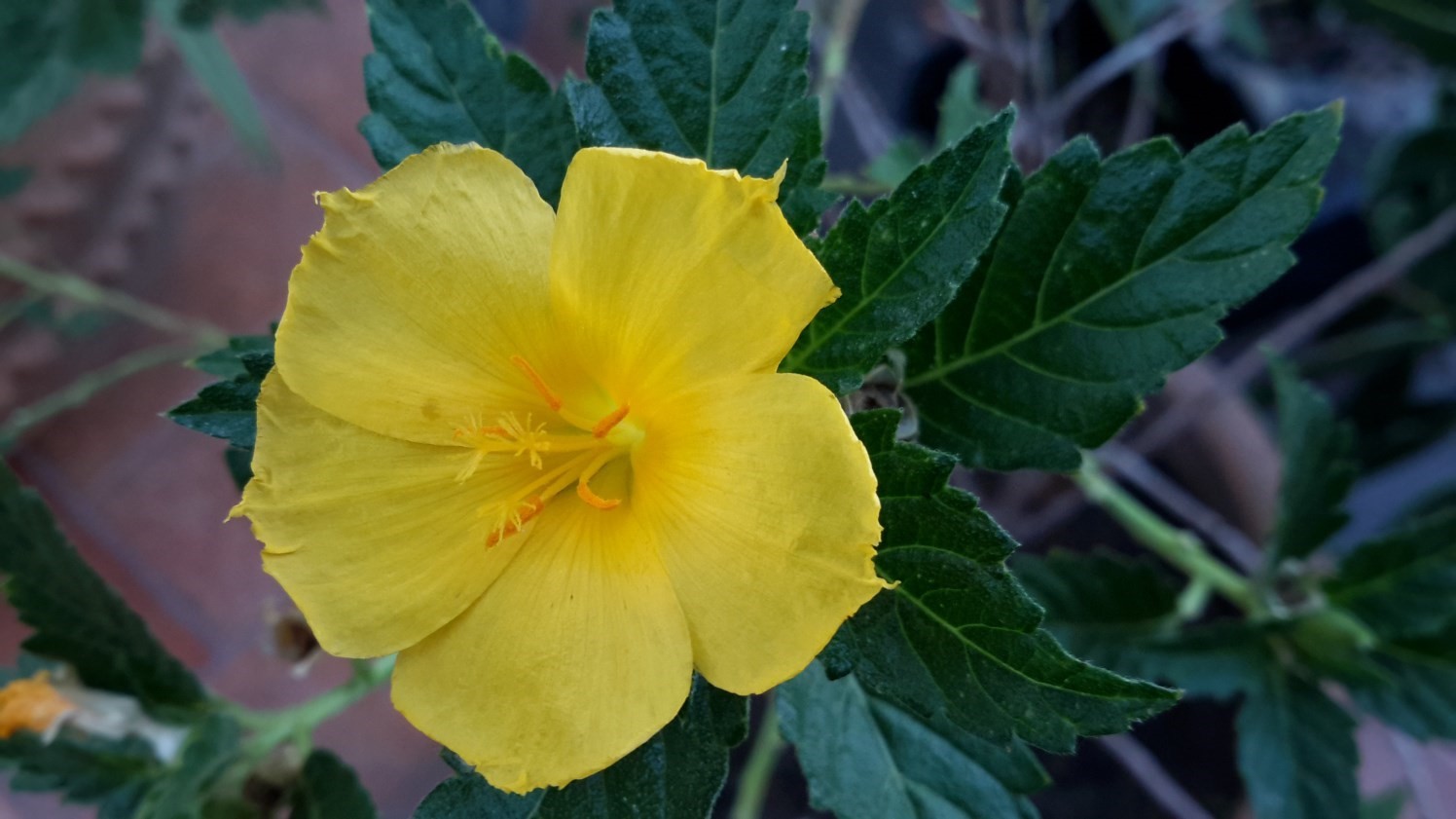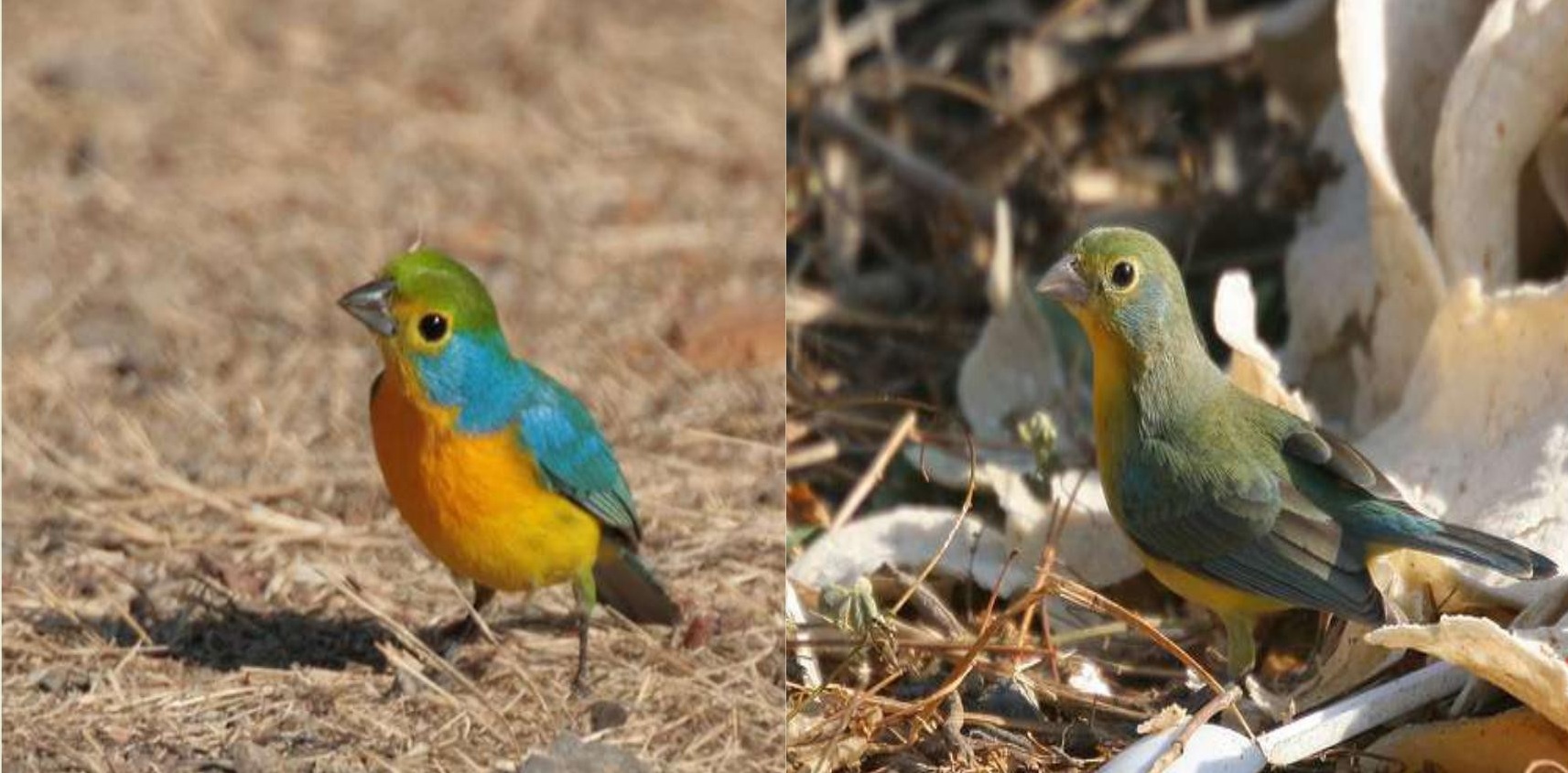By Tommy Clarkson from the October 2018 Edition
Yellow Alder Turnera ulifolia
Family: Turneracceae
Also known as: Yellow Buttercups, Bahamian Buttercup, Cuban Buttercup, Cinnamon Buttercup, Buttercup Flower; False Damiana, Banker’s Flower, Holy Rose, Sage Rose, Yellow Bells, Yellow Elder, Yellow Turnera, West Indian Holly or Ramgoat Dashalong
Ramgoat Dashalong? (Honest, I don’t make these names up!) Actually, that’s what it is generally called in Jamaica. Here in Mexico, it’s known as calendula. And a couple of those names Yellow Bells and Yellow Elder are what others call the clustering yellow-flowered Tecoma stans. I agree with you, it’s befuddling and think some botanical folks do that just to confuse the likes of you and me!
Actually, if one looks at the Yellow Alder’s family tree e’rrrrr, make that a bush one finds that it is wholly unrelated to the alder genus, Alnus. Beyond that, it’s really what’s considered a subshrub, as a rule growing to no taller than five feet (1.52 meters) tall. With a pair of glands at the leaf base, its margin-toothed leaves (This is called a dentate margin if you’d like to impress your friends, alternate and are simple (which, hastening to avert assertions of defamation) does not imply that this species is not smart!) being lanceolate or ovate to elliptic some plants just can’t seem to make up their minds as to what to wear on their branches!
Its leaves grow clustered toward the tips of the branches. Plants in the full sun branch more and stay fuller than those in partial shade. But the plant, by its very nature, tends to often look leggy.

One way to address this challenge is to thicken the plant by cutting back its stems which will force new branches to pop out and grow closer to the ground.
The family, Turneraceae, consists of just over 200 species of flowering plants in ten genera. All members of the genus – of which there are somewhere between fifty to one hundred – originated in Mexico, Central America and several islands in the West Indies. The Turnera ulifolia is best known for its attractive, solitary, funnel-like, up to two inches wide (5.08 cm), yellow blooms comprised of five-parted, obovate petals. These blossoms close for floral business in the afternoons and, of course, all recognized international flower holidays!
I’ve often seen them used as a solitary specimen, but they are great in mixed borders, in rock gardens, as foundation specimens, in combination plantings and they grow well in containers and can be brought indoors for the winter in cold climates. They are drought tolerant and, hence, quite suitable for xeriscaping.
But, to be totally candid, it grows like – and is often considered – a weed throughout it natural growing region. In fact, several countries and a number of Pacific islands, to which it has been introduced, now consider it an invasive species. All on its own, it would appear, it’ll pop up in unlandscaped coastal areas, sandy fields, in roadsides, disturbed sites and abandoned farms. (Some folks just have no appreciation for a plant seeking only to be its own “wild child” self!)
Generally easy to get along with, what really bugs this plant are Whiteflies which, if a severe infestation, can indeed injure the plants substantively. Aphids and scales might also be drawn to its foliage but, generally, this is not all that serious. Its primary leaf herbivore is the caterpillar Euptoieta hegesia, which will evolve to become the Mexican Fritillary Butterfly. But not all insects are bad for it as T. ulmifolia spreads through dispersal of its seeds by ants!
This character has applications beyond mere flowerdom! A tea made from Yellow Alder leaves is used in traditional South American and West Indian cultures to treat gastrointestinal problems such as constipation or diarSouth American and West Indian cultures to treat gastrointestinal problems such as constipation or diarrhea in addition to colds, flu, circulatory problems such as heart palpitations, menstrual spasms and dermatological difficulties. It is used in Brazilian folk medicine as an anti-inflammatory and I’ve read of other cultures also employing it for treating hair loss and thrush as well as anti-inflammatory, antioxidant, antimicrobial and antiulcerogenic activities.
Even on a healthy specimen, the leaves are a bit sparse.

This plant’s pride is its attractive, solitary, funnel-like, up to two inches wide (5.08 cm), yellow blooms.
Rhea in addition to colds, flu, circulatory problems such as heart palpitations, menstrual spasms and dermatological difficulties. It is used in Brazilian folk medicine as an anti-inflammatory and I’ve read of other cultures also employing it for treating hair loss and thrush as well as anti-inflammatory, antioxidant, antimicrobial and antiulcerogenic activities.
Which all goes to show that (sung to the tune of the 50’ s song) “You can’t judge a plant by looking at its flower!”
This plant’s pride is its attractive, solitary, funnel-like, up to two inches wide (5.08 cm), yellow blooms.
Which all goes to show that (sung to the tune of the 50’ s song) “You can’t judge a plant by looking at its flower!”
Should you wish more Yellow Alders, allow its pods to dry on the plant, then simply break them open to collect seeds.
And yes, these bushes will attract butterflies even beyond the earliest form of the Mexican Fritillary!
Download the full edition or view it online
—
Tommy Clarkson is a bit of a renaissance man. He’s lived and worked in locales as disparate as the 1.2 square mile island of Kwajalein to war-torn Iraq, from aboard he and Patty’s boat berthed out of Sea Bright, NJ to Thailand, Germany, Hawaii and Viet Nam; He’s taught classes and courses on creative writing and mass communications from the elementary grades to graduate level; He’s spoken to a wide array of meetings, conferences and assemblages on topics as varied as Buddhism, strategic marketing and tropical plants; In the latter category he and Patty’s recently book, “The Civilized Jungle” – written for the lay gardener – has been heralded as “the best tropical plant book in the last ten years”; And, according to Trip Advisor, their spectacular tropical creation – Ola Brisa Gardens – is the “Number One Tour destination in Manzanillo”.


